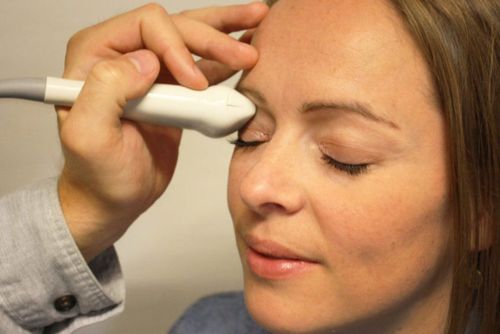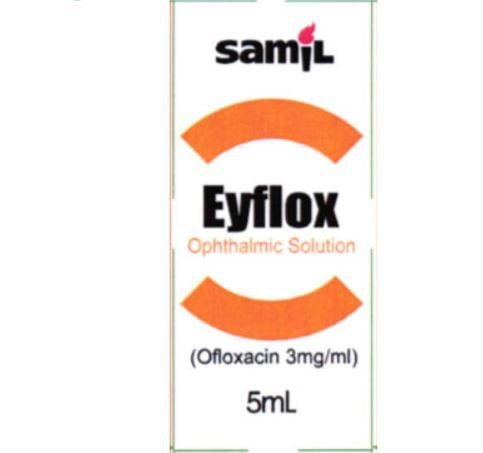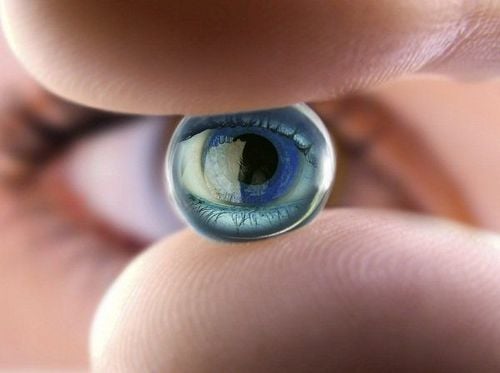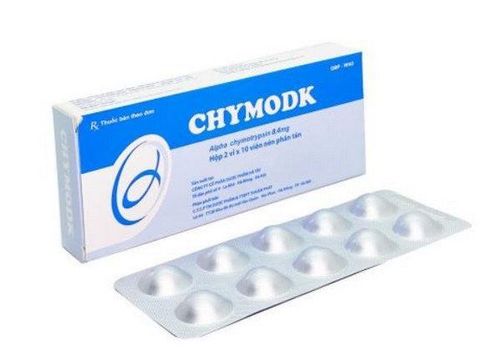This is an automatically translated article.
The article is written by Doctor, Associate Professor, Dr. Hoang Thi Minh Chau - Interdisciplinary Department - Vinmec Times City International Hospital.
Cataracts (also known as cataracts) are common diseases in the elderly, and are the most common cause of blindness in the world.
1. Cataract disease
The lens (also known as the nucleus of the eye) is a transparent, biconvex lens. The lens is an important component that helps light to pass through, helping light rays to focus properly on the retina. The ability of the lens to change the thickness of the lens, called accommodation, helps the eye to see clearly near objects.
When this transparency disappears, the lens becomes opaque and light is difficult to pass through. The consequences of cataracts are impaired vision, blurred vision and even blindness.
Although this is a common disease in the elderly, young people can still get it.
Vision loss is the most important and common symptom of cataracts. Patients often have fairly symmetrical bilateral blurred vision. Cataracts affect central vision, starting with blurred vision at distance, then near vision is also affected except for one opacity, especially a subcapsular opacity behind the lens.
The degree of vision loss depends on the progression of the disease. In the early stages, about 1/10 vision will be lost, when the disease is most severe, the patient can only perceive light.
There are many causes that can cause cataracts such as: environment, lifestyle, nutrition, genetics, trauma... However, age-related cataracts account for the majority. Most cataracts appear after the age of 60.
Age: As people age, changes can occur in the protein structure of the lens, leading to cataracts. Congenital: Newborns are also at increased risk of developing cataracts due to genetic disorders. In addition, the disease can also develop because the mother during pregnancy has infectious diseases such as measles, rubella and syphilis. Secondary causes: Diseases such as glaucoma, diabetes can also complicate cataracts. Long-term use of some drugs such as corticosteroids (small as well as oral), lipid-lowering drugs (simvastatin), anti-arrhythmic drugs (amiodarone), antidepressants (phenothiazines)... increase the risk of cataracts. Trauma: Some trauma can lead to cataract formation either immediately or years later. Other causes: include overexposure to UV (ultraviolet) rays, X-rays, and other radiation during radiation therapy. Sunlight has been shown to cause 2 to 3 times more cataracts in cataracts. control group and could not be considered a contributing factor. Malnutrition, diarrhea, dehydration, deficiency of antioxidant factors, smoking, and alcohol consumption are also important co-factors.
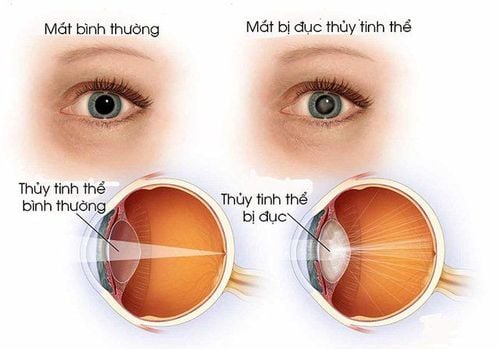
Giảm thị lực là triệu chứng quan trọng và thường gặp nhất của bệnh đục thủy tinh thể
2. What should be examined to detect cataracts?
Patients have symptoms such as:
Blurred vision Feeling dazzled when looking at strong light such as headlights at night, sunlight... Looks pale or yellowish. Night vision is worse. Look at a formation of two or more shapes. The glasses you are wearing change often, you can take off your glasses and still read if you are wearing presbyopia glasses. Because these symptoms can also be signs of many other diseases in the eye, the patient must be examined and supported by a specialist.
Usually, the patient will have a comprehensive eye exam. Eye problems and other related problems should be checked:
Degree of vision loss Degree of cataract In our eyes we will look for related diseases such as age-related macular degeneration, retinal disease diabetic retinopathy, nearsightedness and glaucoma (glaucoma). Whole body: Examining and detecting other diseases and possible relationships with eye conditions such as: high blood pressure, diabetes, infections... Currently, one of the methods of treating cataracts is The most reliable is still surgery. Phaco surgery (phaco eye surgery technology) is increasingly popular and is considered the best cataract treatment method today.
3. Cataract examination at Vinmec Times City International Hospital
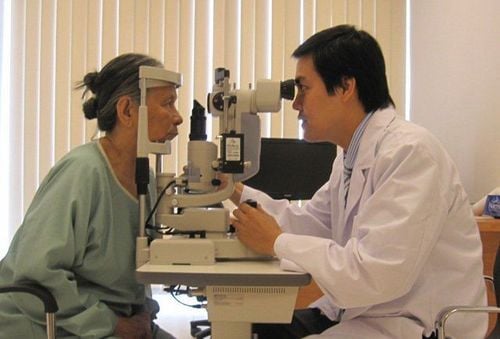
Công nghệ mổ mắt Phaco hoặc mổ cườm Phaco
When registering for the Cataract Surgery Consultation and Examination Package at Vinmec Times City International Hospital, customers will receive:
Comprehensive eye examination. Indications for surgery (if any). Selection of artificial lens, eye ultrasound, blood test. Advice on drugs, foods, factors that can affect surgery. Anesthesia and resuscitation examination to assess the preoperative condition. Surgical prognosis. Phaco surgery (Phacoemulsification) is also known as Phaco eye surgery or Phaco cataract surgery. This method uses sound wave energy to pulverize and separate the cloudy lens into small pieces that are sucked out through a small incision, and replaced with an artificial lens. This is considered the safest and most effective surgical method available today.
The advantage of this technique is that the incision is small, safe, and vision is restored quickly. Patients can soon return to their daily lives.
Although the operation usually lasts only 5 to 10 minutes, Phaco surgery is classified as a major surgery because it is an intraocular surgery and directly affects vision.
Please dial HOTLINE for more information or register for an appointment HERE. Download MyVinmec app to make appointments faster and to manage your bookings easily.




